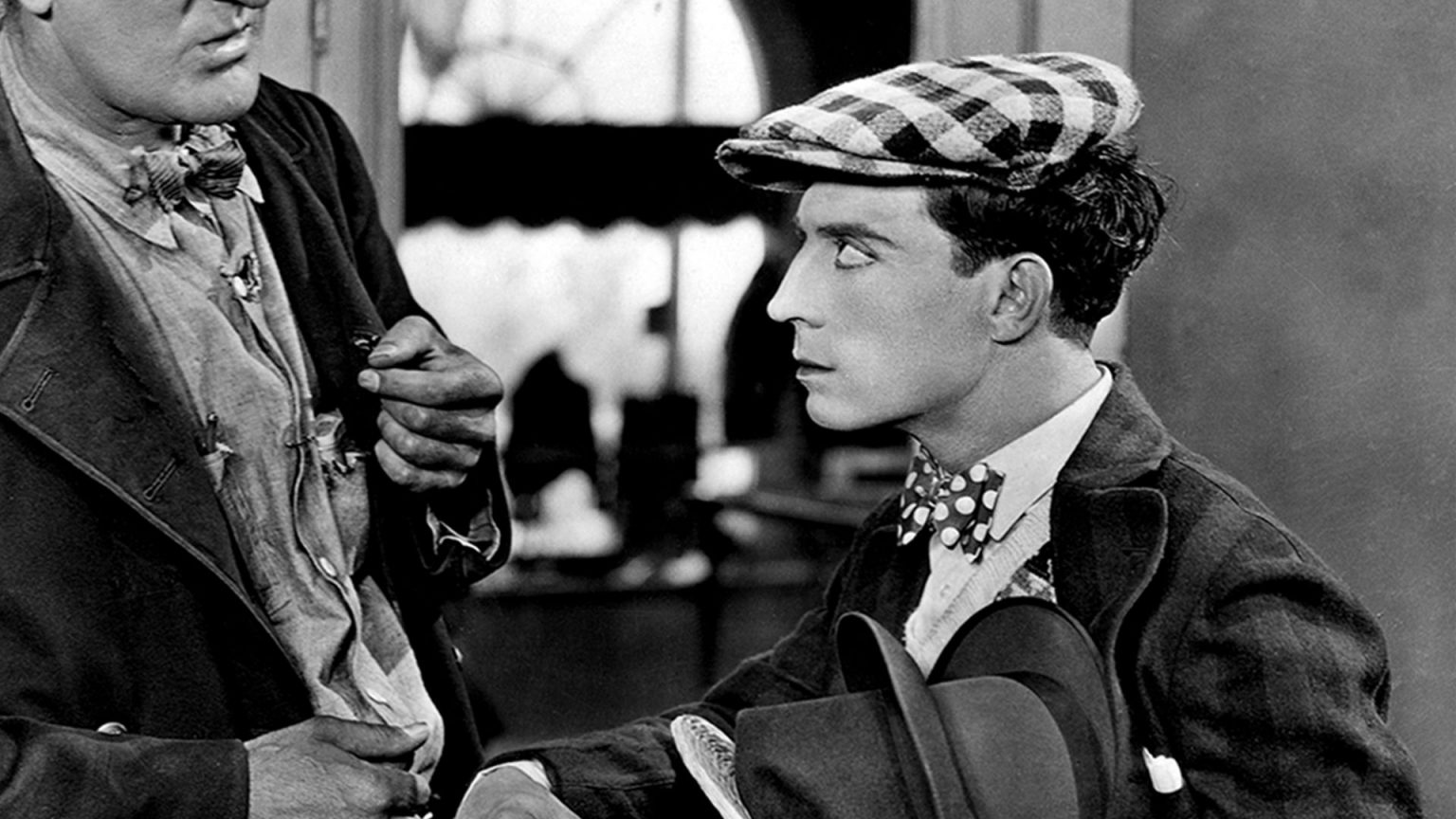Prior to the release of Steamboat Bill Jr. (1928), the hype around Hollywood was that it was Buster Keaton’s costliest feature, had been several months in the making, and was his funniest picture in years. As the effete son of a gruff steamboat captain, Keaton whips up a handful of memorable sight gags and stunts, including a jaw-dropping scene where he finds himself standing in front of a building on the verge of collapse. The edifice drops down on him, narrowly missing his head. Legend has it that the cameraman turned away at the last moment, so close was Keaton to being crushed and killed. But filmgoers stayed away from this feature. Keaton was losing his audience by 1928, as well as the faith of United Artists. The studio wanted more modest productions, not Keaton’s money-guzzling experiments, however artful.
Steamboat Bill Jr. deserved a better reception. It’s prime Keaton, with a few classic bits and an amazing climax where he goes head to head with a cyclone, wind machines borrowed from several studios to create the proper effects. Watching him charge into the foul weather is fascinating because the image so paralleled his personal life at the time. When he made this film, his heyday was near its end. He’d had consecutive flops, he was a full-blown alcoholic, and his marriage to Natalie Talmadge was disintegrating. United Artists had also saddled him with a film crew he didn’t respect. It’s hard to believe that his portrayal of a determined young man leaning into a windstorm wasn’t in some ways informed by his own frustrations.
As “Willie Canfield,” Keaton is forever trying to prove himself to his dad, a larger than life character known all along the Mississippi River. No matter the disappointment in his father’s angry eyes, Keaton remains, as ever, stone faced. Less than a decade later, when he was making shorts for Educational Films, he’d be balding, gaunt, with dark circles under his eyes. Here, he’s still a strangely handsome little man. One of the ironies of his career was that Keaton possessed a noble profile, which he occasionally exploited for laughs. To call him hangdog was to miss the point. He was an attractive fellow trapped in the body of a miniature acrobat, a clown who was secretly gallant.
As in many of his other films, Keaton plays a bumbler with a heroic side. What’s fascinating is the way he snarls and grimaces during the movie’s grand finale. Keaton had talked producer Joseph Schenck into spending a fortune to recreate a Mississippi hamlet that would be destroyed; he flings himself into every frame and is tossed around like so much debris, fighting as if he knew this movie would be his last shot.
Reviews were favorable – The San Francisco Examiner praised Steamboat Bill Jr. as superior to the latest comedies from Charlie Chaplin and Harold Lloyd – but ultimately it was the biggest financial bust of Keaton’s career. It would only be in the 1950s when Keaton was rediscovered by film buffs that Steamboat Bill Jr. would be properly appreciated. After its failure, Keaton resurfaced at MGM where he was simply an actor under contract. The next few years saw him star in some successful films, but his freedom to create as he pleased was taken away. He’d never make another masterpiece. He’d fight no more cyclones.




